Natural factors, lack of investment, annual aging of fixed assets of power supply systems often lead to breakdowns and power outages. This usually happens in small villages, rural areas. Therefore, for a country cottage, it is necessary to provide a backup power supply. In a modern home, everything functions with electricity. If the boiler room, water supply is turned off in the absence of the owners, in winter, in frosts, the cottage will suffer significant damage. Therefore, it is impossible to do without backup power supply of a country house. It is necessary in case of voltage surges in the network above normal. Stabilizers do not cope with them, household equipment breaks down. A reliable uninterruptible power supply or inverter will automatically hold the set value.
How long do you need to count on the source
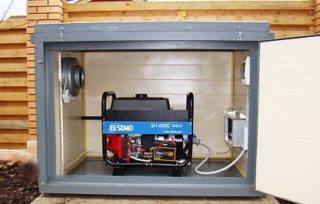
A competent approach to uninterrupted power supply of a private house should take into account the periods of time, the frequency of current outages. Short and medium periods of power outages are due to accidents or the vagaries of the weather. Lasts from 12 to 24 hours. Long-term, several days, can occur during disasters of a natural nature. The equipment must instantly respond to a power outage, ensure the operation of all systems in the house or in the country for the required time.
For the correct choice of a power source, it is necessary to take into account:
- the duration of power outages in a given area;
- what type of electricity consumers in the house, if there is equipment that needs three phases and 380 V - a single-phase source with 220 V will not work here;
- the values of the currents that the equipment uses in normal and peak modes.
If in doubt, you can invite an electrician who will take into account all the important points and help you choose the equipment.
Ways of connecting sources of backup power supply

Uninterruptible systems for providing backup power supply are one- and two-stage. The single stage circuit includes an inverter and batteries of sufficient capacity to last for several hours. The batteries are charged from the mains. In the event of an emergency shutdown of the central power supply, the system instantly automatically switches to home power mode. Hybrid inverters allow you to add power. If 5 kW comes from the network, the output can be from 9 to 29 kW.
For long power outages, a two-step method is suitable. The system consists of an uninterruptible power supply (UPS), battery, generator. Generating sets run on gas, petrol, diesel fuel. The energy of the wind and the sun is used as fuel.
Vital equipment is connected to the backup system - heating and water supply components, emergency lighting, one or two sockets for household appliances. The minimum power supply for a home with an area of up to 300 square meters is 2 kW.
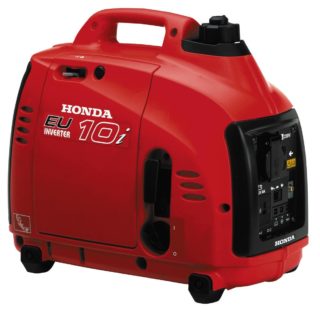
It is possible to purchase a backup power supply system to connect all the equipment of the cottage.Its configuration and cost will depend on the load.
For a small house, the best option is to use compact and inexpensive sources of electricity.
- The inverter already has an auto-start function. With the battery pack, it is placed in the back room. Works without recharging for 24 hours. It is not cheap, but quiet, does not require additional investment and supervision.
- An inexpensive compact gasoline, diesel generator can be simply rolled out of the house, or placed in an open street extension. They are not equipped with an automatic start-up scheme, but switched on manually. They have a low cost. Well suited for a country house.
- If the dwelling has a centralized gas supply, a gas generator can be installed in a separate room or on the street.
In stationary backup power supply systems of large country cottages, generators, solar panels, and geothermal sources are used.
Varieties of generators
When choosing a generator for an autonomous backup power supply, it is necessary to take into account not only the cost of a set of equipment, but also the price of fuel. The parameters of the place for placement and operation must comply with the rules and regulations. This is also a considerable investment.
Gas generators
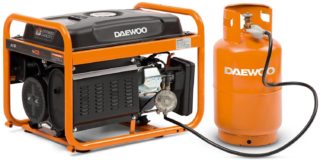
Can be placed in an unheated room. They make little noise. For liquefied gas, special containers are needed - a gas holder or a cylinder. One bottle of 50 liters is enough for 15 hours of power supply for a small house. If main gas is used, it is necessary to make correct exhaust ventilation in the room. Draw up and agree with the gas services a package of documents for connecting the object.
Gasoline Generators
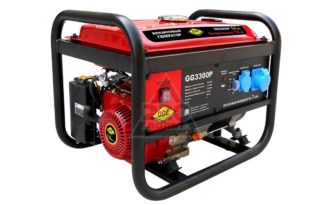
Advantages: the ability to work at subzero temperatures, the availability of fuel. They have a motor resource for 5-7 hours of work, then a break of 1 hour is needed. Automation is not included in the basic delivery set. You need to buy it, install it, configure it separately. An operating permit is not required.
Diesel Generators
They can work in all weather conditions. Economical - fuel consumption is 1.5 times less than that of gasoline. Operating time - 6-15 hours, depending on the capacity of the fuel tank. Disadvantages: Noise, exhaust fumes, expensive maintenance compared to gasoline. To start on frosty days, it is necessary to provide for the storage of fuel in a warm room.
Unconventional power supplies
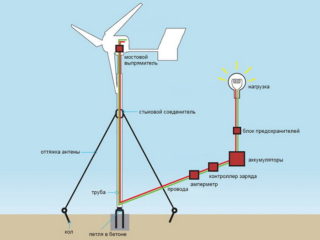
These include wind generators that will only work in areas where the wind is constantly blowing. Geothermal installations using hot water from the bowels of the earth. But such water is saturated with minerals and toxins. It is impossible to merge it into open sources.
Solar panels
Back-up power supply of a country house using solar panels is not cheap, but a good solution to the problem. The equipment is environmentally friendly and quiet. The set consists of modules, controller, inverter unit, batteries. The disadvantage is the high price.
Possible options for the combined use of different sources of backup power.
When planning the installation of uninterrupted power supply at home, it is necessary to take into account all the factors of the system's operation: the cost of equipment, fuel, maintenance, installation, additional costs.








